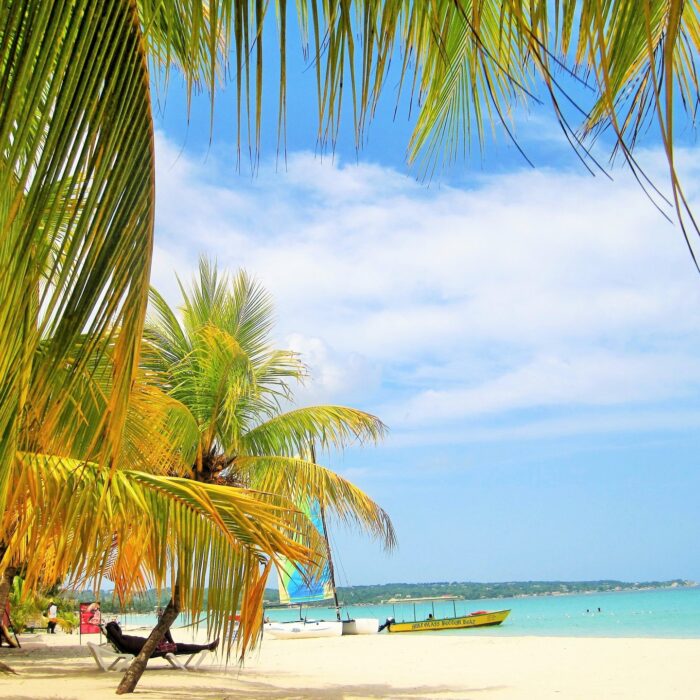The appearance of the GTS index in the 911 line car means that now it’s being used in the entire range of petrol Porsche. After the Macan, Cayenne, Panamera and even Boxster and Cayman, marked with the coveted nameplate, received deforced engines from top models, rumor has it that the Carrera GTS could also claim the 3.8 engine from Turbo. Alas, the three-liter six-cylinder one, familiar from the S, is used here.
It turns out that Porsche model policy is not as consistent as we, the journalists, would like. But still, it’s okay — the manufacturer simply chooses the optimal solutions for their business tasks. The GTS letters still denote a set of existing components and popular options offered at an attractive price.
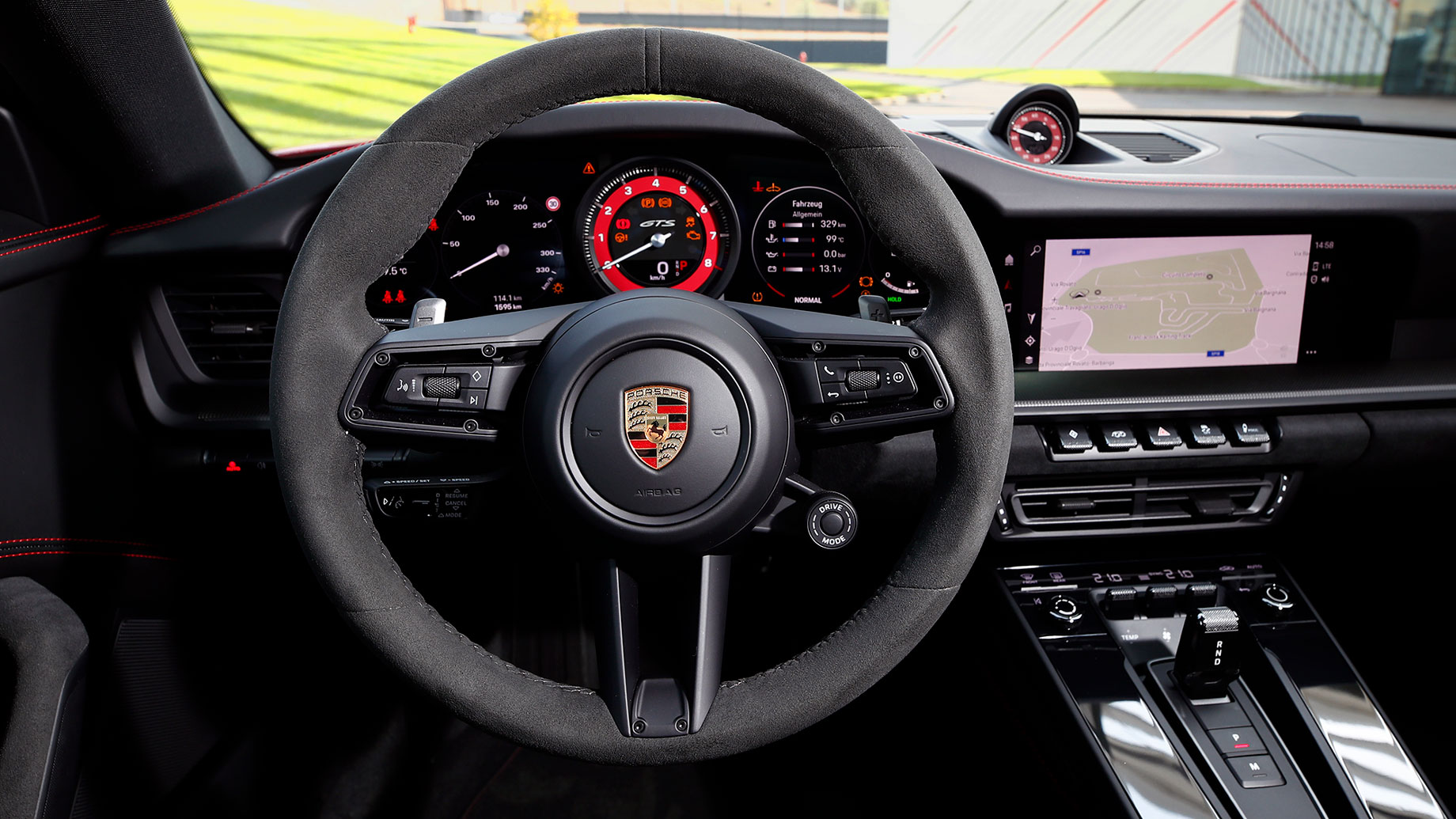
To begin with, there was a choice of power units. The rear-wheel drive coupe is available with a six-speed manual gearshift as a free option! For sure, in the Porsche universe, getting something without the extra pay means to give away the same amount of money for the car that is cheaper to manufacture. But, in my opinion, it’s fair enough for a car assembled for yourself. There are more three-pedal modifications in large markets, but we are happy with one.
The engine is traditionally boosted by 30 h.p. for the performance of the GTS — it turned out to be 480. However, for the first time it was achieved purely by software means. A slightly higher boost pressure of 1.3 bar is provided by the same superchargers used on the “S”, while the previous generation GTS was equipped with the optional large-diameter impeller turbochargers.
The three liter boxer engine, no doubt, has good traction even at relatively low speeds. But in this case, the vehicle data, according to which the maximum 570 N.m. (+40 N.m. relative to “S”) develop in the range of 2300–5000 rpm, do not describe the real picture. If, having chosen one of the highest gears, you simply put the accelerator at two and a half thousand revolutions, the motor needs time to inflate. At peak pressure, there is plenty of torque — but the turbo six-cylinder engine gets there with noticeable effort in a few seconds.
The situation improves rapidly if you start accelerating from three thousand, and even from four the response is excellent. In everyday life, where the engine is most likely to be paired with an intelligently tuned eight-speed robotized gearbox, you will hardly encounter a shortage of traction. The automated Porsche is always in the right gear, giving no reason to complain about the lack of its response.
Basic for the GTS sport edition (Porsche Sport Exhaust, in other words PSE) lets you change the sound from very peaceful to a bit loud. Just like the other Carreras 992. But here is that the PSE keeps a given program, no matter how cheerfully you drive. You see, in the 911-th from the previous generation, just as in all modern Boxsters and Cayman, the electronics itself opens the muffler damper when accelerating at a certain speed, even if the sport mode is turned off. Here, the valve remains closed until the cutoff.

Chassis improvements, equally important for all markets, are spoken of with special piety. First of all, the GTS springs and dampers are unified with the Turbo/Turbo S. Not that the suspension of the top models has any unique qualities that would immediately come to mind when you hear about such borrowing… But it still sounds impressive. Adaptation was limited by the rewritten software for electronically controlled racks.
Since it was not possible to pre-ride the standard “S”, it’s hard for me to say how big the suspension difference is between them and the GTS version. In theory, the preloaded springs from the heavier Turbo increase the angular stiffness of the suspension, reduce the longitudinal dives under braking, and slightly spoil the smoothness of the ride. But without direct comparison, these changes are barely perceptible.
Cast-iron brakes are also from the Turbo. This unusual borrowing, which often happens with Porsche, is difficult to explain. But braking dynamics reserve straight from the assembly line certainly adds peculiarity to the GTS line, highlighting it from the rest of the Carrera.
There is an interesting option called the “light package”. It originally appeared in the Turbo S top-model configurator shortly after the release of the GT3, and is now available to the GTS version customers. As you might guess from the title, you get rid of 55 lbs by replacing the conventional accumulator with a lithium-ion one and installing carbon fiber buckets while removing the rear row. Besides, lightweight glasses are used.
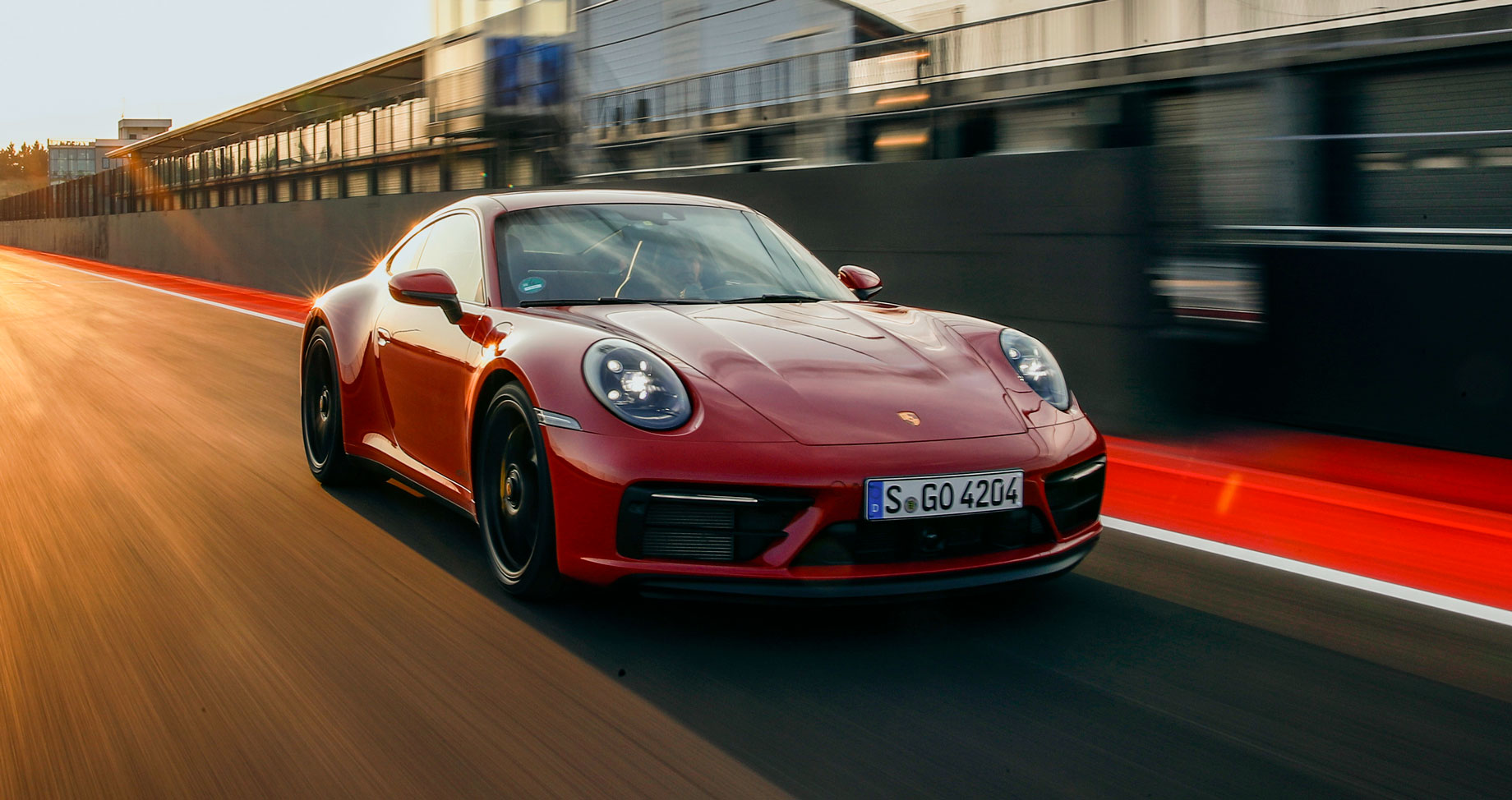
It also includes improvements that are not directly related to the mass. Diverse airflow guides at the front of the bottom reduce lift at a high speed. To maintain aerodynamic balance, the angle of attack of the rear spoiler in the raised position is increased by four degrees. Also, the steering mechanism of the rear axle is included in the package.
Given that some of these options make the car heavier, it would be more appropriate to call the package “track” or use the word “performance” for it. Moreover, in those countries that Porsche considers cold (Russia for example), a lithium-iron-phosphate accumulator is already installed on the 992. Moreover, if the seats are too extreme, they will sell you a lightweight package… with 18-position seats. In this case, according to company brochures, there is no talk of any mass savings. This is a bit confusing.
In addition, you need to be prepared for increased noise. In fact, the 911 of the 992 series was never a quiet car: some time after the sales started, the Germans had to include double side windows in the basic equipment. But now, apparently, everyone is used to it — the lightened package of the GTS version is devoid of part of the engine compartment soundproofing.
The Porsche sports car premiere can’t be imagined without the track. This time we are hosted by a brand new experience-center near the city of Brescia, an hour drive east of Milan. Named after the province of Franciacorta, the complex costs 28 million euro, and you can see it not only in the amazing location or spacious modern buildings — the territory has its own high-quality 2.5 km (1,55 miles) long ring road.
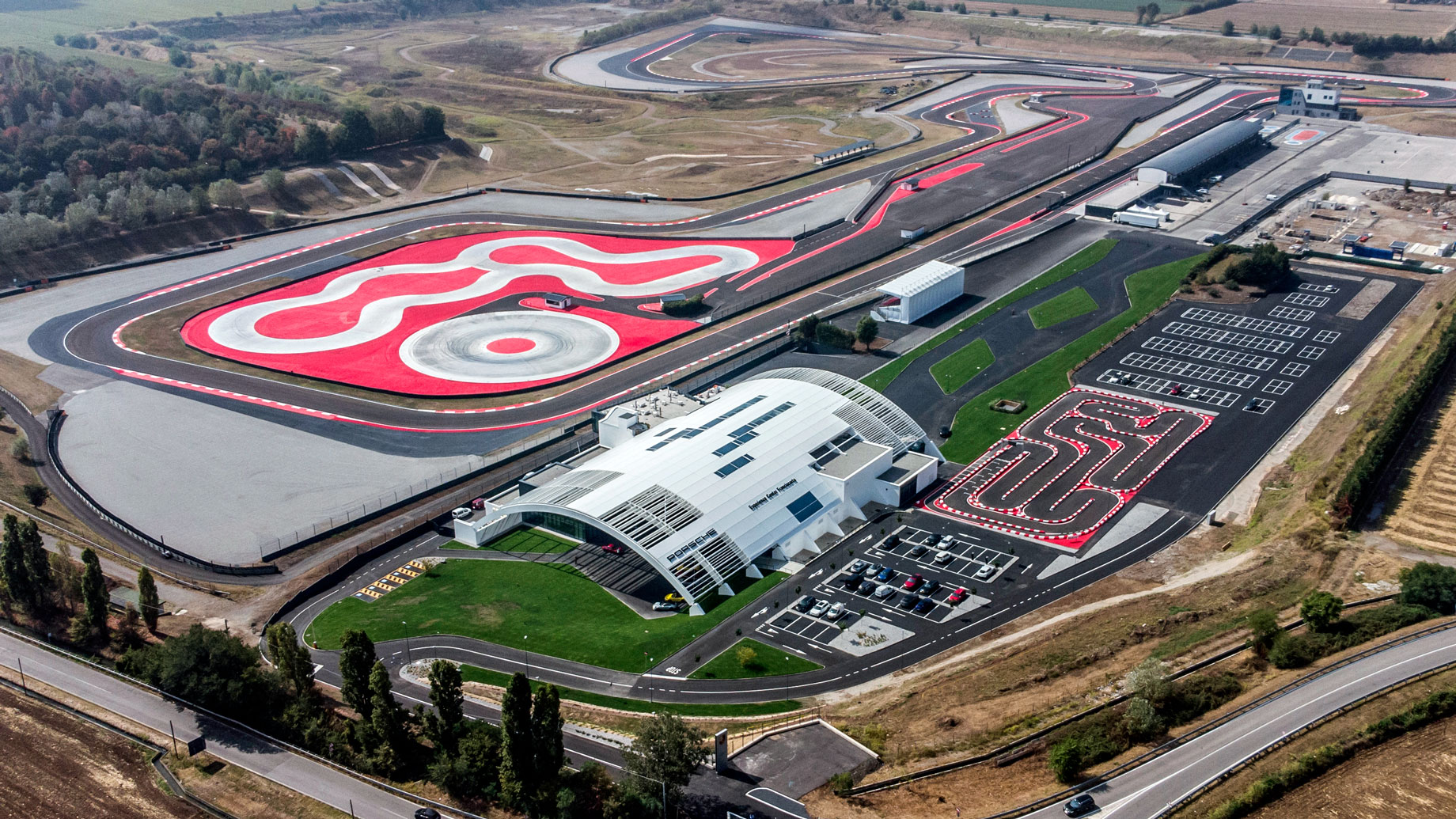
Here used to be a karting track, not quite suitable for the sport car testing, but the current configuration has enough width, speed, and interesting bunches of turns. Official opening was only a few days before our arrival, so I was one of the first visitors. It is assumed that we are rolling out a coupe to the track, and getting acquainted with a cabriolet and the targa on a public road. Fair enough. First in line is four-wheel drive coupe Carrera 4 GTS.
I’ve already ridden quite a few Porsche 992s around the track, and yet I’m still amazed with the grip they develop on road tires. In this case it’s Pirelli P Zero. The fact is, the newest 911s need to be forced, so that everything falls into its place. On the track, Porsche throws off the road safety mask and immediately shows serious speed. The speed is so high that the pace set by the German instructor seems too restrained. However, the last thing the organizers want to see is a hole the size of the 911 in a brand new fender, so that’s understandable.
The 992’s excellent handling comes from the front suspension. From generation to generation, engineering efforts have been invested in widening the front track, and now I would call it almost perfect. The grip of the steered wheels today has reached such a level that to overcome it you need to drive like a clown.
The previous 991 series has already had both stability and colossal rear grip, thanks to the multi-link suspension, but the front grip was missing. With the new 991 this problem was solved.
When you switch from a four-wheel drive GTS to a rear-wheel drive, it, obviously, becomes more fun. I dont think its circle time is better. But with 50 kg off the front axle, steering effort cleared of the influence of the driveshafts, all of these gives the basic GTS more freedom. It feels lighter, sharper and more precise.
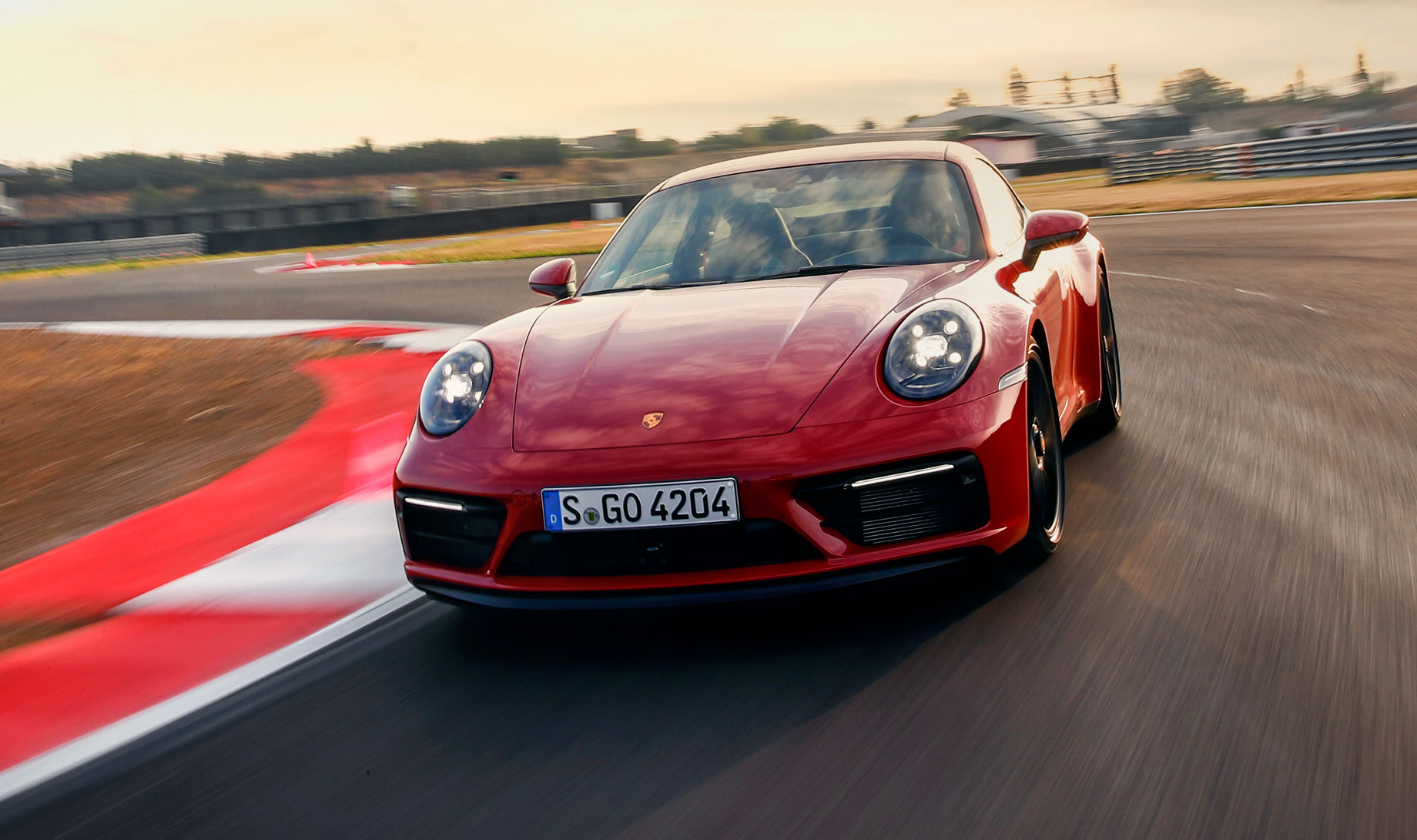
All of this, of course, is of little concern to those who are not going to smoke the tires on track days, but are more interested in the opportunity to drive their Porsche without regard to weather. I would say that with a pair of driving wheels, Carrera is able to row out on any surface, but with four of them, there are always a lot more chances. It’s just that additional confidence comes at the cost of a significant weight handicap, and in the heavier bodies case, there is already enough ballast.
If in the factory data of the lightest rear-wheel drive GTS coupe with a manual box, 1510 kg (3328 lbs) are indicated, then for the all-wheel drive Targa with PDK there comes 1685 kg (3714 lbs). That’s enough to have a visible influence on Porsche’s behavior. And, although I didn’t get the Targa this time, my thesis is confirmed by four hours spent with the Carrera 4 GTS convertible on breathtaking mountain paths. Thanks to the stick shift it has about 1630 kg (3593 lbs) in it. But you will definitely notice the weight.
Starting off, you pay attention to the light grip, especially in the second part of the pedal stroke. This car would definitely be less of a bother in traffic, than my Cayman GT4, which needs a lot of muscle work. At the same time, moving the seven-speed gear lever is more difficult than I’m used to.
Some new cars have some troubles with tight gear shifts, but later the mechanism switches easier. However, there are already more than 3000 kilometers (1864 miles) on the odometer of the cabriolet, so it’s unlikely that it’s a run-in. It’s just that this box is not as pleasant to deal with as with both six-speed one in GT3 and GT4. Try, for example, quickly changing gear in Carrera at a high speed. Nothing else takes so much effort to disengage the gears and move the lever further.
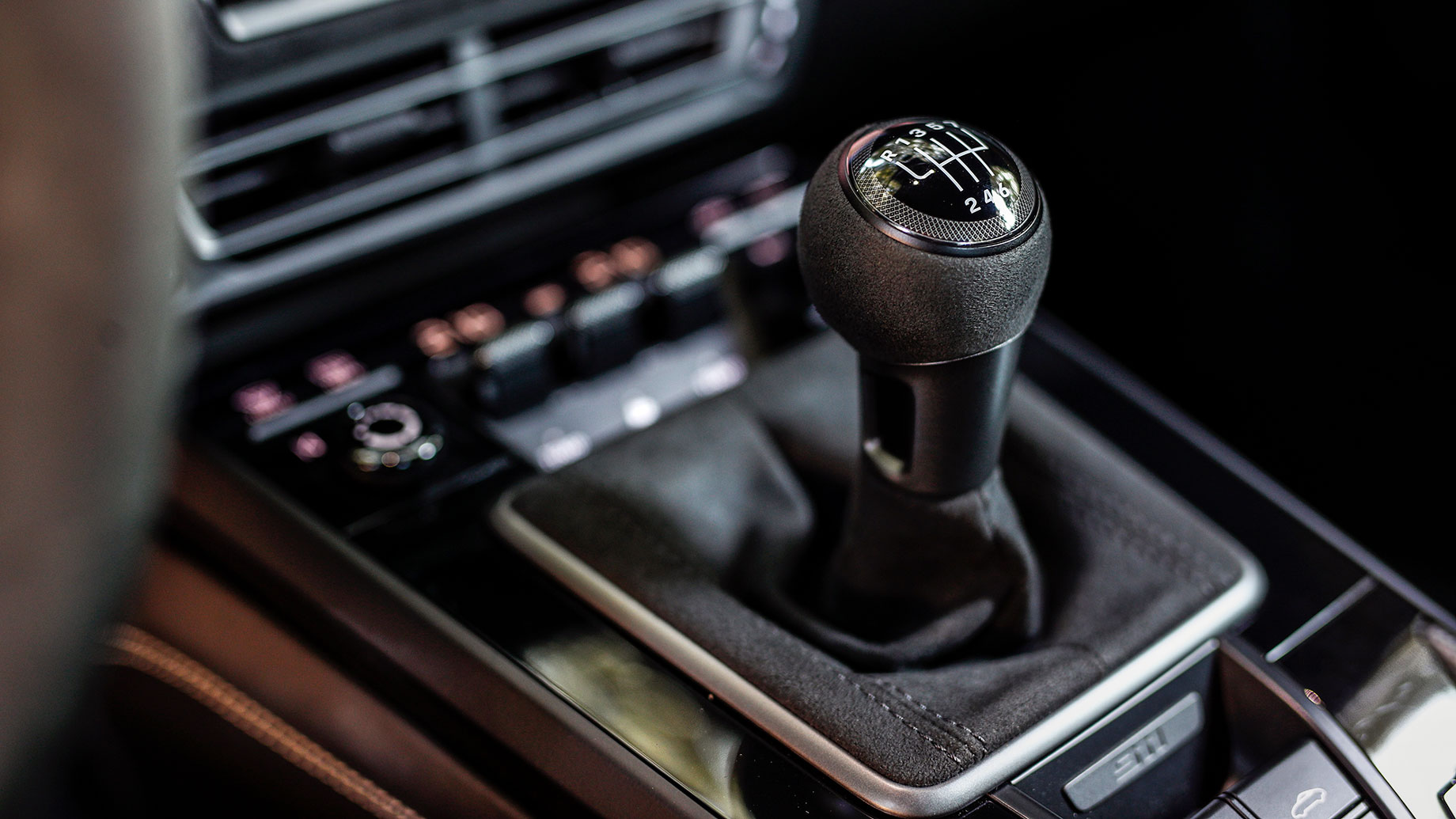
In addition, it seems to me that, by its nature, a six-cylinder turbo engine does not go very well with the manual gearbox. Even after a quick shift at full throttle, you have to wait for it to inflate again, which feels forever to take. Obviously, I’m spoiled with the almost instantaneous response of the naturally aspirated engine, but this old-school boost setup, coupled with faulty gear shifting, makes me squint at the eight-speed robotized gearbox, dreaming of the seamless acceleration that it provides.
A quick glance at the passport dynamic indicators only adds points to the preselector gearbox. You can see how much time is wasted between manual switches. Сonvertible with PDK picks up 100 km/h (62 miles/h) in three and a half seconds, which is seven tenths faster, and reaches 200 km/h (124 miles/h) as much as 1.1 seconds earlier. At this speed, this is equivalent to a gap of about 60 m (2.3 inches). And this despite the extra 35 kg (77 lbs), as well as additional mechanical losses in the power unit.
It’s not that the seven-speed manual gearbox is downright bad — the mere fact of its existence and availability to order should cause delight. And yet these cars are designed primarily on the assumption that you will order a PDK. We’re used to the fact that Porsche is making fantastic manual transmissions, but this one falls a little short. The reason, most likely, is that it’s made from the previous generation PDK, and such adaptation is impossible without compromises.
Nevertheless, a cabriolet on the manual transmission is an interesting experience. At least because of the ability to go above the sixth gear, which is quite unusual itself. The only thing is that you can get to seventh by mistake, when trying to downgrade from sixth to fifth. And the top row here is exclusively highway: revs drop too much for the sake of the fuel economy…
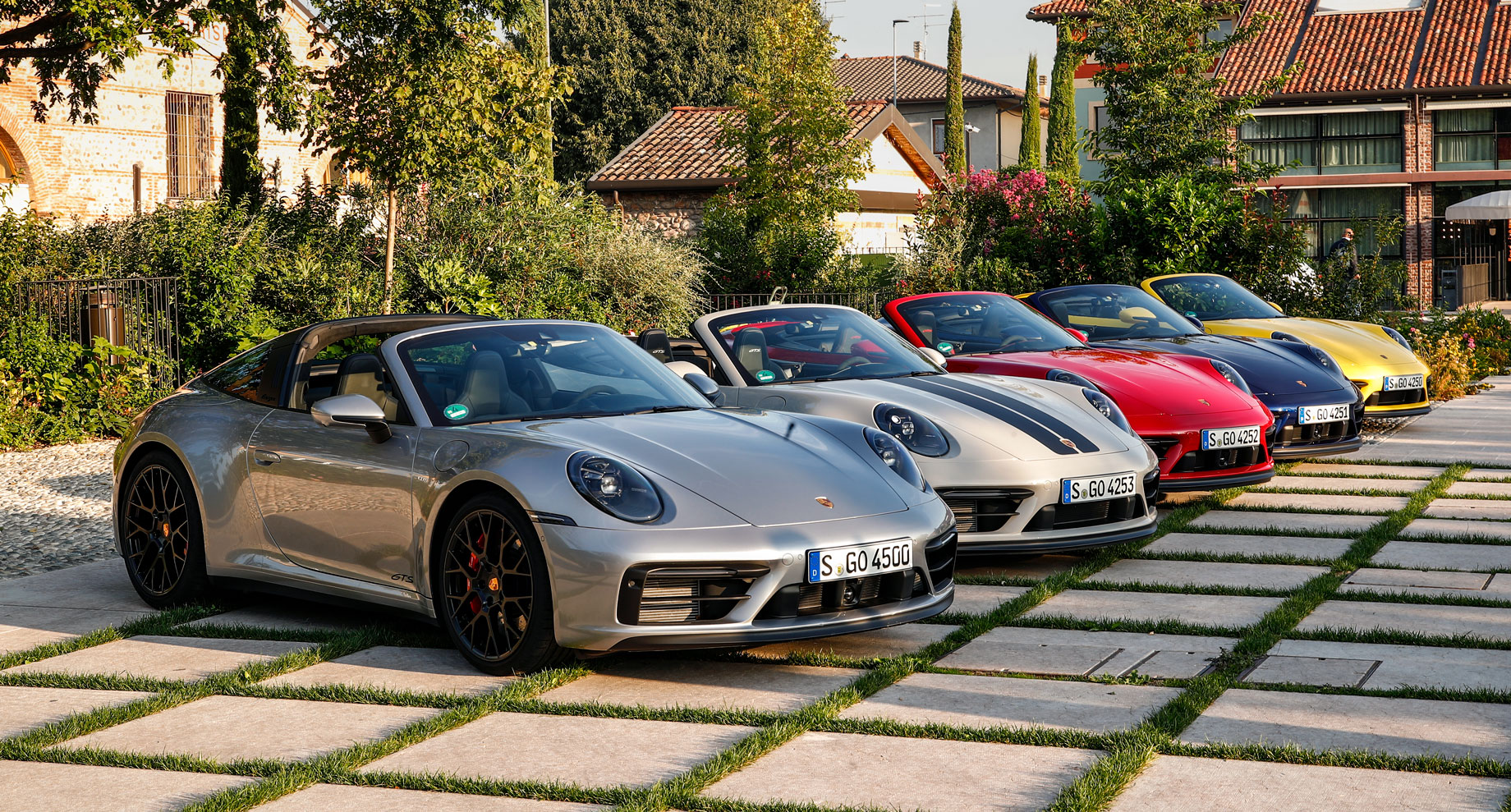
As for the difference on the move, with the roof up, the cabriolet is barely distinguishable from the coupe with the same type of drive. And yes, the mass affects: the reaction to the change of course is slightly dulled, the inertia is higher. As a result, I was much more stressed out by the coupe difference between the transmissions, than between options with a steel or rag top.
So why would you buy the GTS after all? The boring answer should remind you about the benefits of a package offer and appeal to secondary prices. Let’s just skip that and move to the more exciting reason: the GTS provides you an access to sport options that are not available for other Carreras. Play with the configurations and you’ll notice how easy it is to create the “baby GTS”. Or “baby Turbo”, if you choose the four-wheel drive with comfy seats. Provided that, which is quite interesting, neither the GT3 or Turbo are giving this flexibility in the customization.
This is a translation. You can read the original here: https://www.drive.ru/test-drive/porsche/6172c8b2424311363bb95f44.html

Published May 12, 2022 • 14m to read




